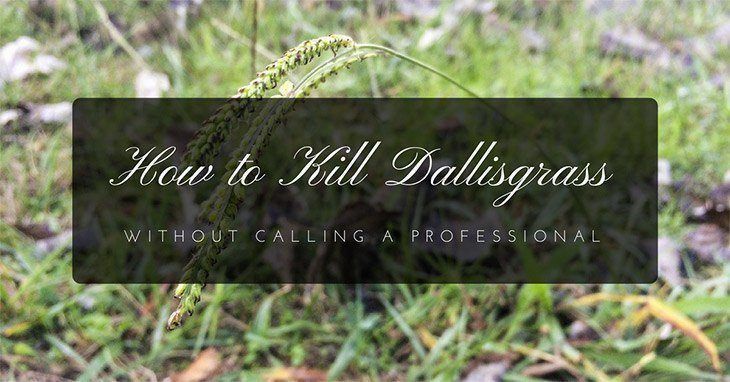When you are trying to maintain a beautiful lawn, the last thing you want is dallisgrass invading your yard. It is difficult to control, but you can learn how to kill dallisgrass with a few tips and tricks.
Dallisgrass wasn’t native to the United States. Originating in Uruguay and Argentina, dallisgrass was purposefully introduced into the area because it is fast growing. It is a great foraging plant for southern, warmer climates. The name dallisgrass came from A.T. Dallis who was a supporter of its use and importation. Unfortunately, the usefulness of the plant is forgotten, replaced with thoughts of an annoying weed.
More...
Identifying Dallisgrass
If you live in an area with a lot of dallisgrass, you probably have no issues identifying the weed. It grows in private and public places. Dallisgrass grows in circular clumps. The clumps can get so large that the inner circle ends up dying as the outer leaves continue to grow.
The bad thing about dallisgrass is that it will smother your grass underneath as it extends and grows. The roots grow and spread easily in moist soil, so most homeowners have a hard time controlling its growth. Other plants struggle to grow in sandy or clay soils – not dallisgrass! The growth rate is twice as fast as your normal grass, so it takes over your yard easily.
Inspection
After you have established beyond a reasonable doubt that the weed you are dealing with is dallisgrass, you are ready to proceed with the inspection. During this phase, you will be tasked with identifying the specific locations where Dallisgrass is most prevalent and determining the overall circumstances of the area. This will assist you in determining where to concentrate your herbicide treatment efforts.
Where to Look for Problems
As you move around your lawn, pay attention to the areas that have the most dalligrass and use this information to gauge the severity of the problem you are dealing with. During the summer, dallisgrass thrives in environments that are both warm and moist. It is most common in certain areas.
What You'll Want to Keep an Eye Out For
Investigate any possible breakouts of the weed dallisgrass. The weed grows in bunches that look like stars and has seed stalks that have three to five segments that resemble fingers and are covered with tiny hairs that provide a silky appearance.
The Effects of Dallisgrass on Your Garden
The weed dallisgrass is in competition for food and water with other types of plants and flowers. As a result of its rapid growth rates, it will kill out other types of turfgrass and completely devastate the landscape. Another unwelcome weed can thrive in the clump's dead core, which creates a breeding site for its own kind.
Clumps of dallisgrass can be dangerous on playgrounds and hurt people, especially kids. The flower stalks of dallisgrass are notoriously difficult to eradicate; even cutting the grass will not be sufficient to eradicate it completely.
It is quite difficult to get rid of dallisgrass once it has established itself in a lawn or garden. Because of the unsightly clumps, the grass on the lawn seems rough, and the ugly clumps give the lawn a rough and untidy look.
Compared To Crabgrass Vs. Dallisgrass
The confusion between crabgrass and dallisgrass is not uncommon among homeowners and turfgrass professionals alike. Both are clumping grassy weeds that can be difficult to eliminate.
It's much easier to distinguish between the two weeds if they're growing side by side. Crabgrass, for example, has large leaves that grow close to the ground and a wide swath of it. In contrast, dallisgrass is taller, has larger seed heads, and typically has black patches that sprout from the side of the stem. The seed heads of crabgrass are smaller and emerge from the stem's tip.
It's common for dallisgrass to flourish when nitrogen-rich fertilizers are put on the lawn, while crabgrass is often suppressed by thicker lawns.
Learning How to Kill Dallisgrass
There isn’t a single method that will kill all of the dallisgrass in your yard. Instead, you have to take multiple steps to control and reduce its growth.
1. Dig Up Dallisgrass
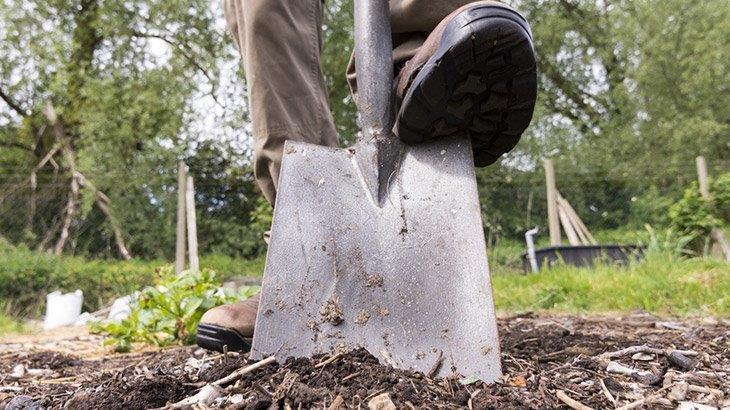
Spreading grass seed by hand
Your first step is to dig up any clumps of dallisgrass in your yard with shovels and trowels. You want to get their entire root system. That is key to slow its return because it will return! If you leave any pieces of the root in the ground, it will pop back up quickly
2. Create a Healthy Lawn
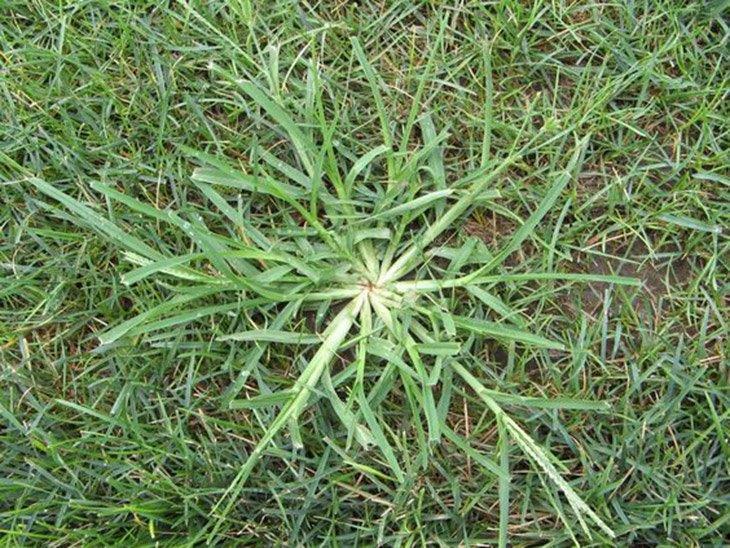
Add Mulch to Garden Beds
After you dig up the dallisgrass in your yard, you want to spread a heavy layer of seeds or sod, which stops the germination of the dallisgrass weed seeds. You don’t want any bare spots in your yard at all because it gives an opportunity for the weeds to take back over your yard. Water your grass seeds and add fertilizer to encourage thick growth. A thick lawn makes it hard for the dallisgrass to germinate and grow.
Another good tip is to cut your lawn frequently for a healthy lawn. You don’t want to cut it too short; 1/3 inch is the ideal length. It ensures your grass doesn’t die. Healthy grass needs to be taller, and it prevents the spread of dallisgrass.
3. Add Mulch to Garden Beds
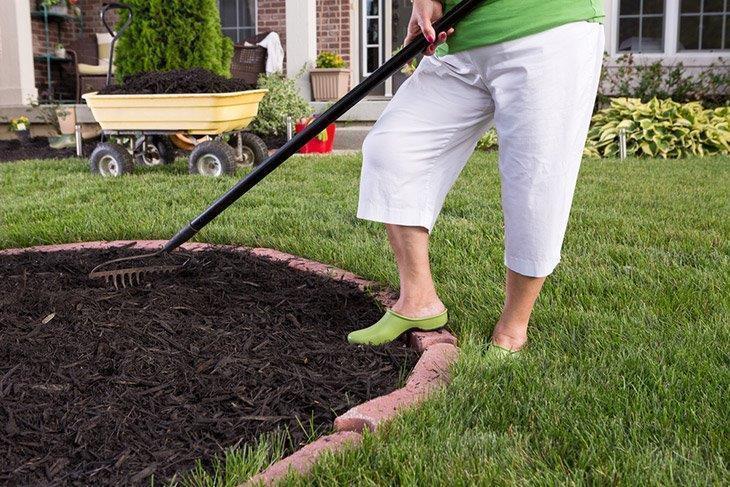
Woman spreading mulch in garden
(Via: 1.bp.blogspot.com)
Dallisgrass doesn’t just grow in your yard; you will find it in any garden bed as well. You need to pull all of the clumps out of your garden bed as well. Then, add a thick layer of mulch over the top. The mulch should be at least three inches thick to stop any dallisgrass seeds from growing through. Mulch also stops birds from getting to the dallisgrass seeds and spreading them places you don’t want them to go.
4. Picking Younger Grass
Find areas with younger grass and begin picking up the pieces while the grass is still young in those areas. Because of this, grass is no likelihood of experiencing any growth. The experts agree that removing the younger grass from a population of dallisgrass will make it less likely that the population will grow.
It's best to wet the area beforehand so you can swiftly remove it. This will help loosen the soil, which will make it easier for you to remove the grass roots from the ground.
For easier dallisgrass removal, try using pliers instead of your hands to assist you in picking the dallisgrass up off of the ground.
5. Remove the Taproot.
The removal of the taproot is one of the most efficient methods available for eradicating dallisgrass. It is the stem's major root that extends downward and vertically into the soil.
It is referred to as the grass's pillar of strength. Dallisgrass can thrive in any season, which means that you should be able to find dallisgrass at any time of the year.
This plant has a taproot that can be easily retrieved from the damp ground. If the ground is not wet, you should be able to pull the root out of the soil by using a puller with a long handle, a weeder, an auger screw, or a foot pedal puller.
Spring is the time of year that is ideal for doing this task. when the first seedlings begin to sprout.
6. It Is Best To Refrain From Picking Mature Dallisgrass.
If you find any mature dallisgrass, you should not pick it because it may have already spread its seeds across your lawn.
Simply picking them up will result in the creation of a divot, from spread up to 5,000 seeds can be released from a single plant. Spraying the grass till it dies is another option.
When you are finished, you can next cover the area with a pre-emergent herbicide so that the seeds do not germinate and produce new plants.
7. Watering and Fertilizing Your Lawn
Watering and fertilizing your lawn on a regular basis is the next step in keeping it healthy. If you notice any bare places in your yard, you should immediately begin filling them in with sod or seeds.
This will prevent the seeds of dallisgrass from taking hold in that area. Maintaining a dense and well-kept lawn will keep weeds from spreading.
8. Regular Cutting of the Grass
Dallisgrass can also be controlled by mowing your lawn on a regular basis. This is to ensure that the grass's growth is not hindered. Keeping your lawn mowed will not only help you eradicate these weeds, but it will also keep it looking its best.
9. A Guide to Dalligrass Herbicide Selection
Herbicides that are powdered and produced from corn gluten are the finest to use in herbicide applications. The reason for this is that it can prevent the dalligrass from developing and germinating.
However, some people have been putting herbicides in perennial beds where no seeds have been sown, despite the fact that these beds do not need to be weeded.
The herbicide directions that come with the product you purchased should be followed when applying dallisgrass killer. The reason for this is that how you apply them to your grass will vary depending on the brand.
To be safe, never apply herbicides containing cord gluten to freshly seeded lawns or beds where you want to grow some seeds.
Pre-emergent herbicides should be used in the winter to encourage the germination of dallisgrass seedlings. This is only effective if applied before seed germination.
While applying this product may slow down the development of your grass, you shouldn't be alarmed because it will quickly recover.
11. Pouring Boiling Water over The Dallisgrass
Dallisgrass will die after a few days if you pour hot water on it. You can repeat this process 3 to 4 times a day until the grass dies.
12. Dallisgrass Can Be Eradicated By Using Vinegar
Dallisgrass can be quickly and easily eradicated at home with vinegar. You will need to start by boiling it in order to be able to transform the liquid into a form that is more concentrated. The best results will come from carefully putting vinegar on the grass leaves.
When you are finished, you can spread the remaining vinegar over the grass in your yard. When using this solution, you need to exercise extreme caution because it can kill some of the vegetation on your property if it gets on it.
13. Using Table Salt to Kill Dalligrass
Table salt is still another remedy that you can utilize, and it is something that you should have no trouble locating in your own home. At the base of the grass, begin tossing in a tablespoon.
You also need to exercise caution while applying salt to your grass because it has the potential to damage the healthy plants that are located nearby, which is something that you undoubtedly do not want to happen.
If you are concerned about the grass on your lawn being killed by a herbicide, you might want to think about using one that is selective.
This means that just the dallisgrass will be targeted, and the surrounding grasses will be spared from destruction. You have the option of using either synthetic or organic herbicides.
Preventing Dalligrass Growth
Try a Pre Emergent Herbicide
Once you do all of these steps, you still aren’t out of the woods. Dallisgrass produces hundreds of seeds on a long spike. Each spike can have anywhere from two to ten spikelets. Each spikelet has at least two rows of seeds. All that needs to happen is a gust of wind, and the seeds are spread throughout your yard.
You will want to find a pre-emergent herbicide that you can use to spray your lawn. If it says it works for crabgrass, it should work for dallisgrass. These herbicides will help to stop the germination and growth of those seeds spread by wind or animals.
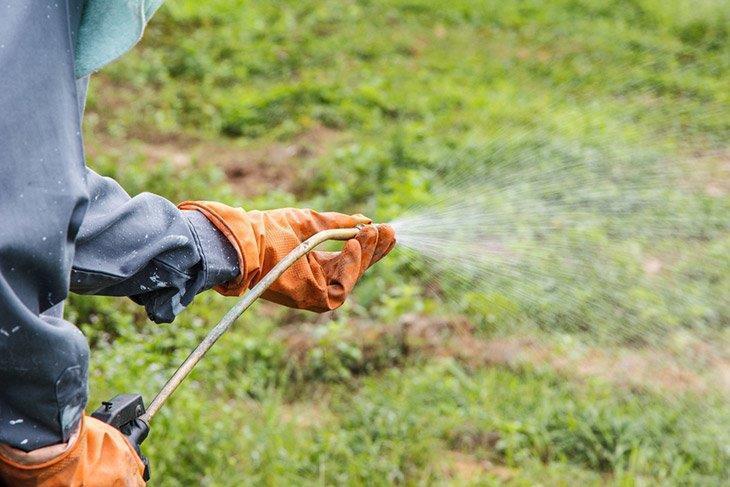
Spreading herbicides in lawn with weeds
Post Emergent Treatments
Sometimes, dallisgrass will continue to grow no matter the methods we take. In those cases, you will need to continue to dig out the weeds as soon as you find them in your yard. This method is physical, but it will help the spread.
The other methods involve using post-emergent herbicides. You can find ones meant for crabgrass removal; they work great. However, you have to apply the herbicides in multiple intervals, two to three weeks apart, several times to ensure the dallisgrass doesn’t grow back
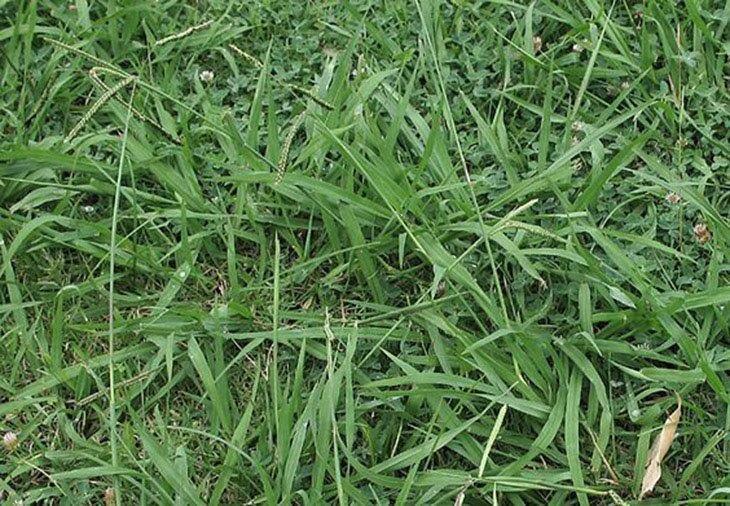
Post Emergent Treatments
(Via: smmflowers.org)
Examining the Instructions on the Herbicide's Labels
Before really applying the herbicide, you should always make it a point to read the label on it first. This is a very important step.
You can learn the best time to apply the herbicide as well as how to do so properly by reading the label.
Additionally, there will be safety precautions that you need to take and adhere to.
Select Between Reseeding And Herbicide
It is best not to employ reseeding and pesticides together because these two methods serve distinct functions. You may get rid of dallisgrass by using a herbicide first, which should be done before you start seeding. After you have completed everything, you can move on to reseeding.
The beginning of fall is the ideal period for reseeding, while spring is the best time to apply herbicide to a lawn or other area. Always keep in mind that a buffer of 50 days between each is necessary.
Your last option is to use a non-selective herbicide for spot treatments. The only negative about this option is that it will kill any plant that comes in contact with the spray. So, if it is in your lawn, you will kill your grass in that spot as well as the dallisgrass. You want to make sure that you pull out the dead weeds quickly and spread sod or grass seeds in those bare areas.
If you are wondering how to kill dallisgrass in St. Augustine, non-selective herbicides tend to be the top recommended choice. You may have to replant plugs of St. Augustine grass in the areas that are dead to stop the spread of dallisgrass.
Learning how to kill dallisgrass in Bermuda lawns is a bit different. You have a specific window of time to spray the dallisgrass with an herbicide, typically Roundup. You can use Roundup on Bermuda grass that is dormant. There is a specific window of time in early winter when Bermuda grass is dormant, but dallisgrass is still alive. You should spray it then. The results are visible in the spring.
(Via: Youtube.com)
Conclusion
Dallisgrass is one of the most invasive and difficult to control weeds you will encounter. Effectively learning how to kill dallisgrass requires a lot of your time and effort. If you take the right steps and diligently watch for signs of regrowth, it is possible to get rid of dallisgrass forever.
Remember, it is important to maintain a healthy lawn and cover any bare spots. Use pre and post emergent herbicides on the weeds, as needed. Remove any clumps you find. Don’t forget those roots! If you use the steps correctly, your lawn will be free of dallisgrass soon!
Faq
1. What is the best way to kill dallisgrass?
2. Will vinegar kill dallisgrass?
3. How do you kill dallisgrass in the summer?
4. How do you kill dallisgrass without killing Bermuda?
Read more:
- https://www.gardeningknowhow.com/plant-problems/weeds/dallisgrass-weed.htm
- https://www.solutionsstores.com/dallisgrass-control
https://sumogardener.com/how-to-kill-dallisgrass/ - https://www.diys.com/dallisgrass-weed/
- https://www.roundup.com/en-us/library/specific-weeds/what-dallisgrass-and-how-do-i-control-it
- https://sodsolutions.com/weed-control/how-to-remove-dallisgrass-from-your-lawn/
- https://lawnmodel.com/kill-dallisgrass/
how do you kill dallisgrass without killing grass, best dallisgrass killer, will roundup kill dallisgrass, dallisgrass killer lowe's, will 2, 4-d kill dallisgrass, does tenacity kill dallisgrass, dallisgrass killer home depot, will quinclorac kill dallisgrass

